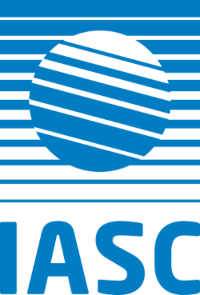 A well-balanced and enthusiastic group of scientists with an interest in glaciers, snow and societal impacts of the two gathered in a beautiful winter setting in Obergurgl, Austria, on January 22-24. The IASC Network on Arctic Glaciology (NAG) meeting combined the annual workshop on the dynamics and mass budget of Arctic glaciers with a cross-cutting activity on “Societal impacts of glacier and snow cover changes in a warming Arctic”.
A well-balanced and enthusiastic group of scientists with an interest in glaciers, snow and societal impacts of the two gathered in a beautiful winter setting in Obergurgl, Austria, on January 22-24. The IASC Network on Arctic Glaciology (NAG) meeting combined the annual workshop on the dynamics and mass budget of Arctic glaciers with a cross-cutting activity on “Societal impacts of glacier and snow cover changes in a warming Arctic”.
The 2.5-day meeting was attended by 48 in person participants from 14 countries, of which about half were early-career scientists. A livestream ran during the entire meeting and was followed by up to 20 online participants. Big thanks to the IASC Cryosphere, Atmosphere and Social & Human Working groups for supporting the meeting and cross-cutting activity, which covered costs for meeting organization and allowed for travel support of fifteen early-career scientists and one keynote speaker!
The meeting program included oral presentation, a poster session + introductions, cross-cutting discussion session, and the NAG open forum. The meeting contained a total of 43 presentations, of which 28 oral presentations and 15 posters. Some scientific highlights of the workshop and cross-cutting activity are listed below. Topics in the general workshop on Arctic glaciology included snow and firn processes, frontal processes, glacier dynamics and glacier mass balance. The cross-cutting activity consisted of two oral presentation sessions, a cross-cutting discussion, and a poster session. Two keynote lectures were given on Impacts of cryosphere change on natural hazards in Alaska (Gabriel Wolken) and Living with or without snow and ice: Changes in the cryosphere affect human activities in the high north (Grete Hovelsrud, online presentation). Other presentations covered a wide range of inter-disciplinary topics connecting glacier and snow science with social sciences. Examples of this include: Impacts of cryosphere change on Arctic communities in Greenland [Shin Sugiyama, Stephanie Matti, Sophie Elixhauser] and across the Arctic [Svenja Holste]; seasonal snow monitoring and trends and impacts on human activities (e.g. reindeer herding) & ecosystems [Kirsty Langley, Lea Hartl, Ward van Pelt]; glacier tourism [Johannes Welling], glacier outburst floods [Wesley van Wychen], fresh water runoff into fjords [Elke Schlager, Andreas Vieli], youth’s place attachment in a changing climate [Maria Risager], and Arctic climate change communication [Jakob Abermann].
Engagement of social scientists and glaciologists in the cross-cutting discussion led to vibrant discussions, e.g. on how to generate funding for cross-cutting cryosphere - societal projects, and on science communication and increased involvement of Arctic communities/ indigenous knowledge holders in our research.
A summary of the meeting and abstract book can be accessed here.
 Given the enthusiasm of the participants and their indicated willingness to join future activities, we strongly hope to be able to organize a follow-up cross-cutting activity in Japan in January 2025!
Given the enthusiasm of the participants and their indicated willingness to join future activities, we strongly hope to be able to organize a follow-up cross-cutting activity in Japan in January 2025!
Scientific highlights of the cross-cutting activity:
- Two invited presentations on impacts of the changing cryosphere in Alaska on natural hazards (Gabriel Wolken) and human activities in the high Arctic in response to snow and glacier changes (Grete Hovelsrud).
- A wide variety of cross-cutting oral and poster presentations on, among others, Arctic & indigenous communities and climate-change adaptation (e.g. in Greenland), snow impacts on reindeer herding, glacier tourism, climate change communication, glacier outburst floods, and runoff changes into fjords.
- Stimulating discussions between social scientists, glaciologists and snow experts on e.g. potential funding for collaborative geoscience – social science research projects, and involvement of Arctic communities in our research.
(Top left: Photo by Shin Sugiyama, Centre: Photo by Matt Nolan)
Date and Location
22-24 January 2024, Obergurgl, Austria
IASC Working Groups funding the project
- Atmosphere WG
- Cryosphere WG
- Social & Human WG
Project Lead
Ward van Pelt (Uppsala University, Sweden)
Year funded by IASC
2023
